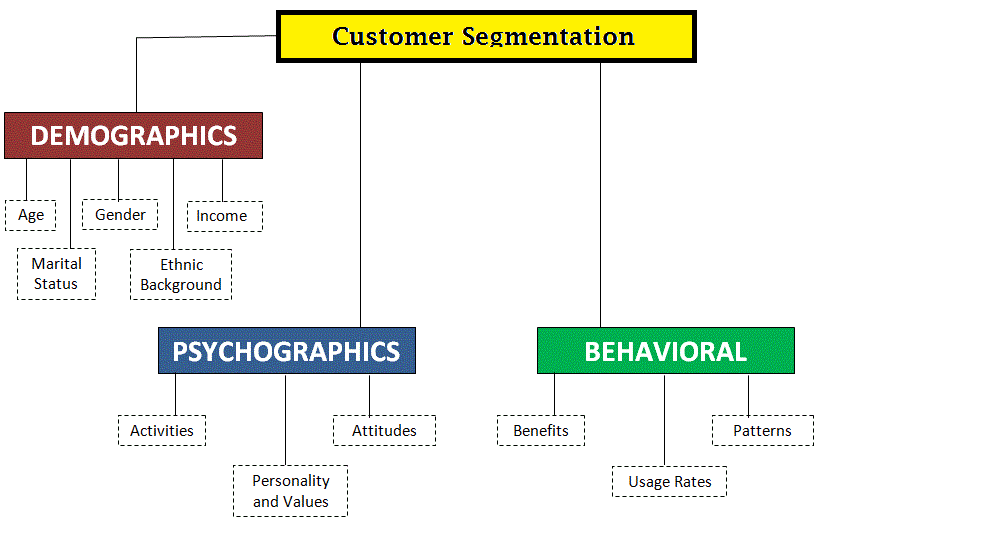Use Magento Customer Segmentation for Smart Online Store Management
“According to a study done by the Harvard Business School professor, 30,000 new consumer products launches each year, 95% fail because of ineffective market segmentation.”
This clearly describes the need and importance of marketing segmentation for the reaping benefits online. Magento commerce’ customer segmentation is an interesting marketing feature that helps to reach out different sections of customers in the easiest way. It is the technique of clustering the customers into corresponding groups based on geographical, demographical, psychographic and behavioral factors. This segmentation helps in planning a productive marketing strategy for the customers.
Basis for Customer Segmentation

Magento Enterprise Edition’s customer segmentation divides all the customers considering a few factors as per some predefined rules. Later, these can be used in other extensions as well for both registered and non-registered customers. The factors taken into account for segmenting the customers are:
- Demographic Factors: Demographic factors include the basic personal information of the customers: age, location, gender, income, marital status etc. Demographical factors are quite helpful in maintaining online stores. These help you identify the majority visitors on your website. For example, you can break down the number of visitors into key locations and understand their behavior. Geolocation segmentation helps in maintaining the website, resulting in enhanced user experience.
- Psychographic Factors: Psychographic factors include the interests, lifestyle, religion, social status, values etc. of the customers. This is a powerful and effective approach to understanding the visitor’s needs. Psychographic factors of the visitors help the marketers to plan the marketing strategy that is effective and rewarding. For example, for some brands, celebrity endorsements work wonders. The reason behind the success of such endorsements is the liking of the brand’s visitors. So, knowing the psychographic behavior of the audience helps the marketers to effectively promote the brand.
- Behavioristic Factors: Behavioristic Factors includes the shopping behavior of the visitors. It includes the time spent by category, which products they buy etc. You can be sought the visitors depending upon various behavior aspects:
- Occasion
- Product usage rate
- Status in a customer lifecycle
- Level of Brand loyalty and more.
Customer Lifecycle Segmentation
Customer Lifecycle Segmentation is really valuable as it provides a deep understanding of the visitors. Many eCommerce analysts have tried this segmentation approach and have found it to be helpful and remunerative. The approach divides the visitors into seven different segments based on their user status:
- All Visitors
To increase the number of visitors and encourage purchasing, it is important to keep a list of all the visitors handy. Promotions like holiday announcements, new product offering etc. will help you achieve the same. - First-Time Buyers
Customers who have made only one purchase from your online store falls under this category. There may be numerous reasons with them for not making a new purchase from your store. Focusing on converting such buyers into loyal customers; different promotion strategies like post-purchase survey, reminders via e-mails, an announcement of new products etc. can be implied. - Repeat Customers
This list includes the customers who have made more than one purchase from your online store. To retain and satisfy them, exclusive coupons, product offerings, product reviews are some of the promotion examples. - Active Repeat Customers
Customers making repeated purchases under a set time frame fall under this category. They are the most valuable segment of customers that generate large revenues. In order to make them feel important, you can reward for their loyalty by giving them early access to the new products, special discount coupons, dedicated refer-a-friend prompts etc. - Inactive Repeat Customers
Customers whose last purchase has crossed the average time between orders 3-5 times need to be encouraged again to make a purchase. By giving them time-sensitive coupons, special discount coupons, holiday and seasonal sales etc. can encourage them to make the new purchase. - Potential Customers
Customers with items in the cart or with saved items carry the potential of making a purchase. All you need is a rock star marketing strategy to encourage them to take the desired action. By giving them first only purchase discount coupon, welcome newsletter or abandoned checkout reminders may encourage to take the next action. - At-risk Repeat Customers
Customers who were active repeat customers but have not made any purchase for a couple of months are known as At-risk repeat customers. Give them time-sensitive coupons, win-back e-mail reminder or something interesting to recover their loyalty.
Implementing Customer Lifecycle Segmentation in Magento
All the Magento online store owners, implement a striking marketing campaign based on customer segmentation by following the below-mentioned steps:
- Create customer segments in Customers > Segments section
- Add relevant conditions for each segment
- Once the conditions are set, you will see the amount of matched customers
- Add promotional rules for each segment
By implementing this, the customers falling in each segment will start getting the customized updates.
Targeted marketing campaigns enhance the store’s efficiency. Being a Magento online store owner, all you need to do is to devote a good time in analyzing the customer base and segment planning as implementing the same is hardly time-consuming. Marketers can catapult the company’s behavior by ensuring that the consumer information they are using for segmenting the customers is relevant to the changes in the market and the purchase history of all the customers.

